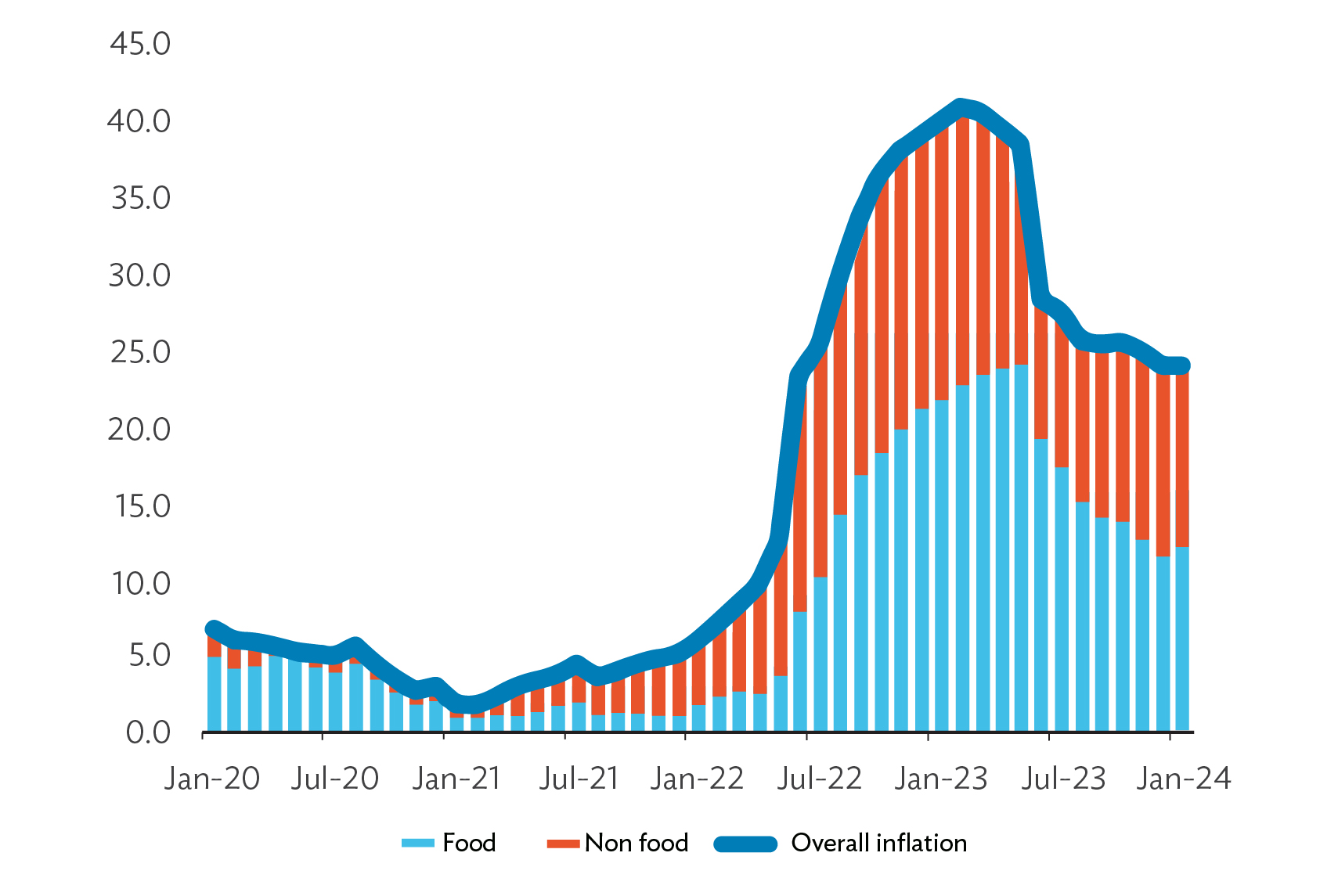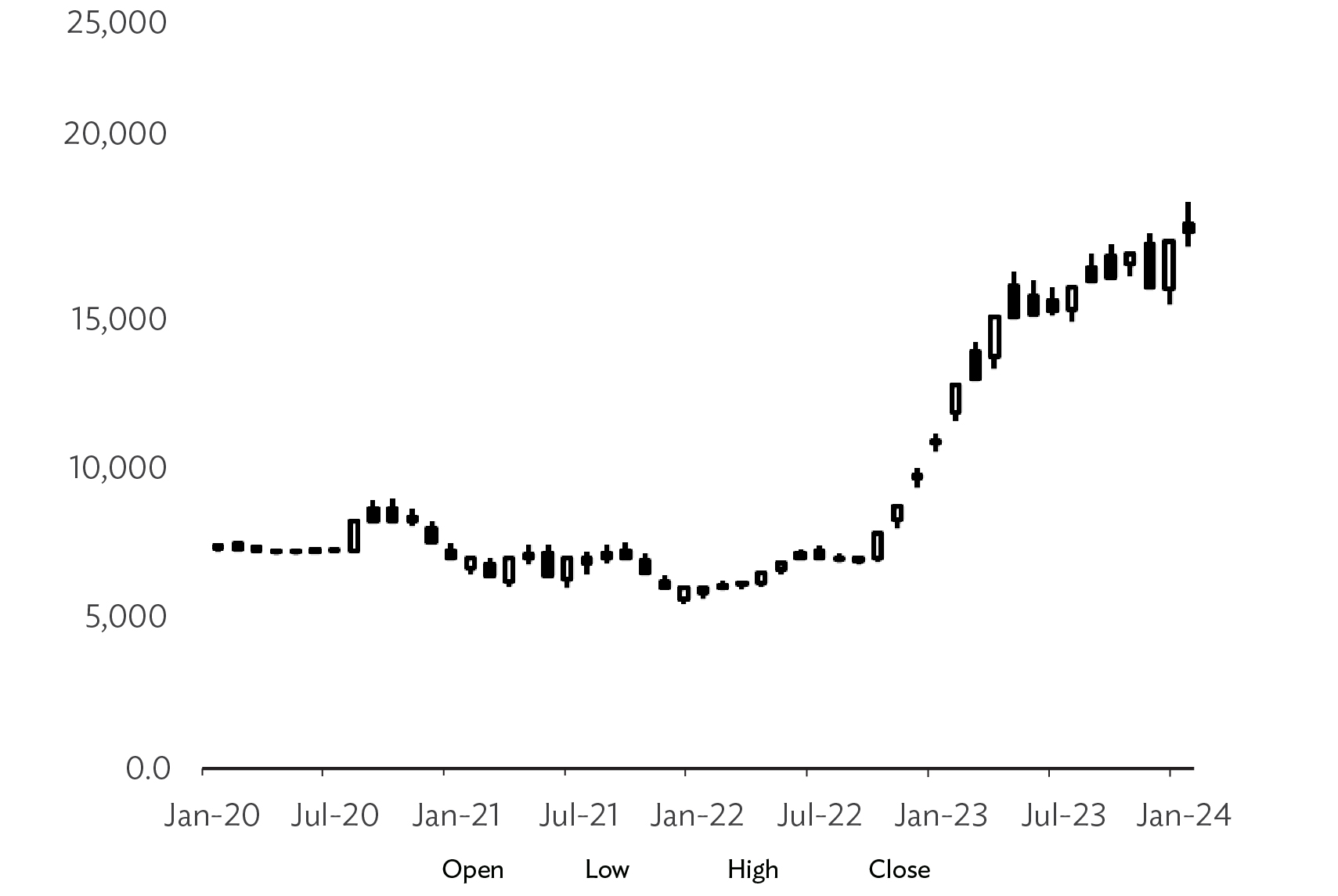Securing Lao PDR’s Food and Nutrition Future
A history of fiscal deficits and large investments financed through external borrowings have led to a notable increase in the public and publicly guaranteed debt to GDP ratio, estimated to have surpassed 120% in 2023. This is further compounded by worsening kip depreciation and an accumulation of non-concessional debt, resulting in scheduled debt servicing obligations averaging more than 10% of GDP annually from 2024 to 2029.
The kip lost half its value against the US dollar in 2022 and another 16.3% in 2023. It also fell against regional currencies in 2023, including 21.3% against the Thai baht and 15.6% against the Chinese yuan, contributing to high domestic inflation. With the kip losing value against other currencies, the ratio of foreign currency deposits to broad money (dollarization) increased to 68.7% in 2023.
In addition, the country's provision of generous tax incentives and limited repatriation of export earnings have led to a depletion of foreign exchange reserves. As of end September 2023, gross official reserves—including a $0.8 billion currency swap with the People’s Bank of China—stood at $1.8 billion, equivalent to only 2.3 months of imports and below the three-month adequacy benchmark. Consequently, the International Monetary Fund Article IV 2023 report has classified Lao PDR as being in debt distress with an unsustainable debt burden.
Consumer prices have also risen more than wages, causing real income and purchasing power to fall in many households. Average inflation jumped to 31.2% in 2023 from 23% in 2022, with lags in imported price adjustments and higher domestic prices driving the increase. In the first half of 2024, average inflation is estimated above 20%. (Figure 1).
Figure 1. Inflation (2020-2024, %)

High food inflation has contributed to persistent food and nutrition challenges. Source: Lao Statistics Bureau.
Prices for rice, sugar, oil, and chicken have doubled over the course of 2023 (Figure 2). Further, the growing season was delayed due to below average rainfall and the late start of the 2023 monsoon season. Other factors affecting agriculture production included labor shortage and rising input costs.
Figure 2. Monthly Rice Prices in Kip

Rice prices have risen sharply. Source: World Bank. 2024. Monthly Food Price Estimates by Product and Market: Lao PDR.
Legal Disclaimer:
EIN Presswire provides this news content "as is" without warranty of any kind. We do not accept any responsibility or liability for the accuracy, content, images, videos, licenses, completeness, legality, or reliability of the information contained in this article. If you have any complaints or copyright issues related to this article, kindly contact the author above.
